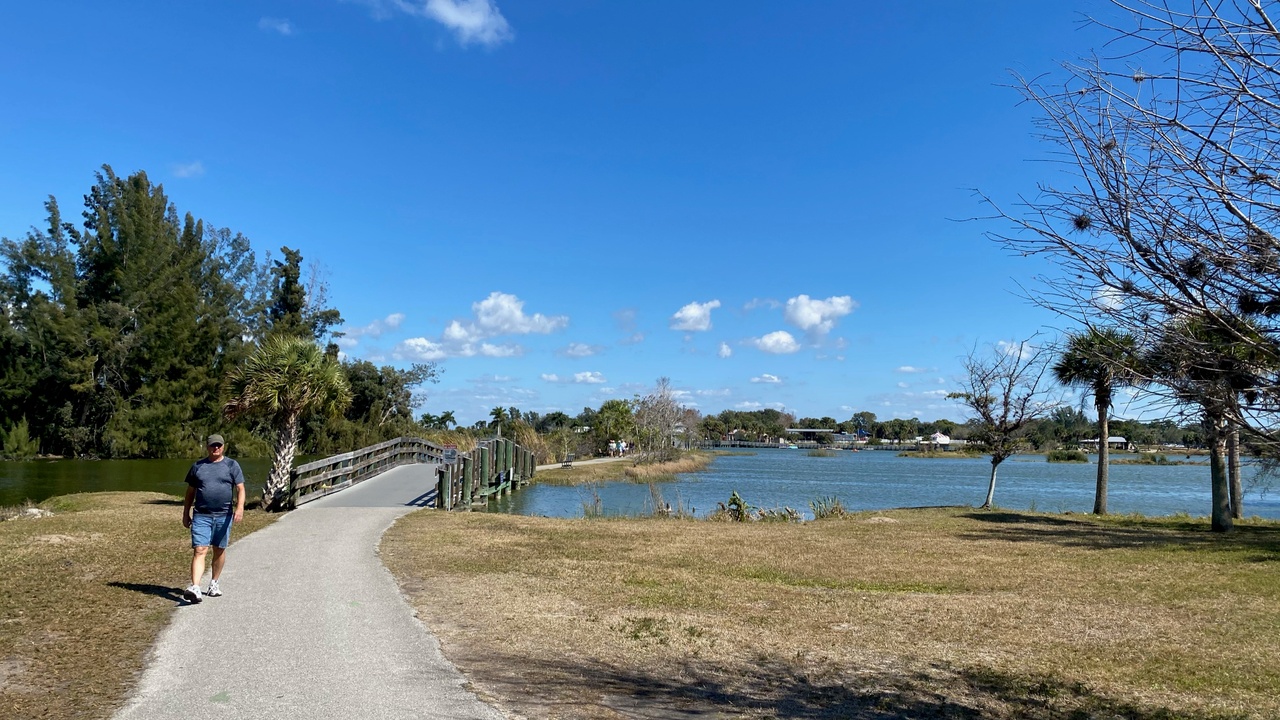Pain Free Movement Starts with Good Hip and Spine Stability

Get out and walk, concentrate on your posture, and flow. Take elongated steps, and breath! A beautiful day for a walk in January, in Lakes Park, Fort Myers. Photo Courtesy of Charly Caldwell II
Having adequate mobility and stability is essential for your health and function.
This is especially true when it comes to avoiding injury. When your joint mobility is restricted, your movement is impaired, meaning the risk of injury is increased.
Therefore, you need full mobility when strength training or performing any other form of exercise.
When we are born, we are generally graced with full mobility but as life progresses, our mobility slowly deteriorates due in part to injuries and our lifestyle choices.
A perfect example being sitting for long periods of time.
On the other hand, we are born with no stability. Stability is developed as me mature throughout our childhood and enhanced through exercise and lifestyle choices later in life.
Therefore, placing a large focus on both mobility and stability in your training will be very beneficial for your total well-being.
The American Council on Exercise (ACE) defines mobility of a joint as the degree of movement to which the surrounding tissue; such as tendons, muscle, and ligaments can perform before being restricted.
ACE further defines stability as having the ability to maintain control of the joint position by the coordinating actions of surrounding tissue and the neuromuscular system.
The two area’s we find mobility and stability especially problematic are the hips and thoracic spine.
Without proper hip mobility, we tend to fall into poor movement patterns.
A lack of hip mobility means that the body must find a different way to move. Unfortunately, this means that the lower back or knees end up doing more of the work.
When we sit down all day, our hip flexors can tighten and our core and glute muscles can weaken from lack of use.
To maintain a healthy hip joint, the joint needs to be exercised to its full range in all directions.
Hip stability helps you maintain your center of gravity and produce strength and coordination in your hips and core muscles.
Hip stability works in conjunction with hip mobility ensuring the freedom of movement.
The thoracic spine includes 12 vertebrae and large surrounding muscles with the ability to flex, extend and rotate.
However, strength imbalances, muscle tightness and poor posture can immobilize this area.
Not only can this result in the reduction of power in rotational movements (a golf swing, tennis volley, or unloading the trunk of a car) it can increase the risk of a lower back injury as the lower back compensates and rotates even though it is not supposed to.
Everyone needs good mobility and stability.
Any joint restriction or muscular weakness will decrease your performance.
An increase in mobility and stability could give you the potential to produce more power in your chosen sport (i.e. golf swing) and increase the control of your swings with fewer restrictions too.
However, despite your golf score, the main reason for improving mobility and stability through the hips and back is to reduce your risk of injury and promote pain free living.
If you enjoyed this blog post, you'll really enjoy our 14 DAY MINDSET CHALLENGE which is part of our Monthly Membership program helping & supporting you toward living your best life!
Our Geared Up theme for you is "Health, Wellness & Fitness in a Multi-Sport Lifestyle". Find out all of the ways we can support you through our Membership programs here.
Let's go on this journey together and change your life as always, “Practice with Purpose and Live with Passion!”
Angie

